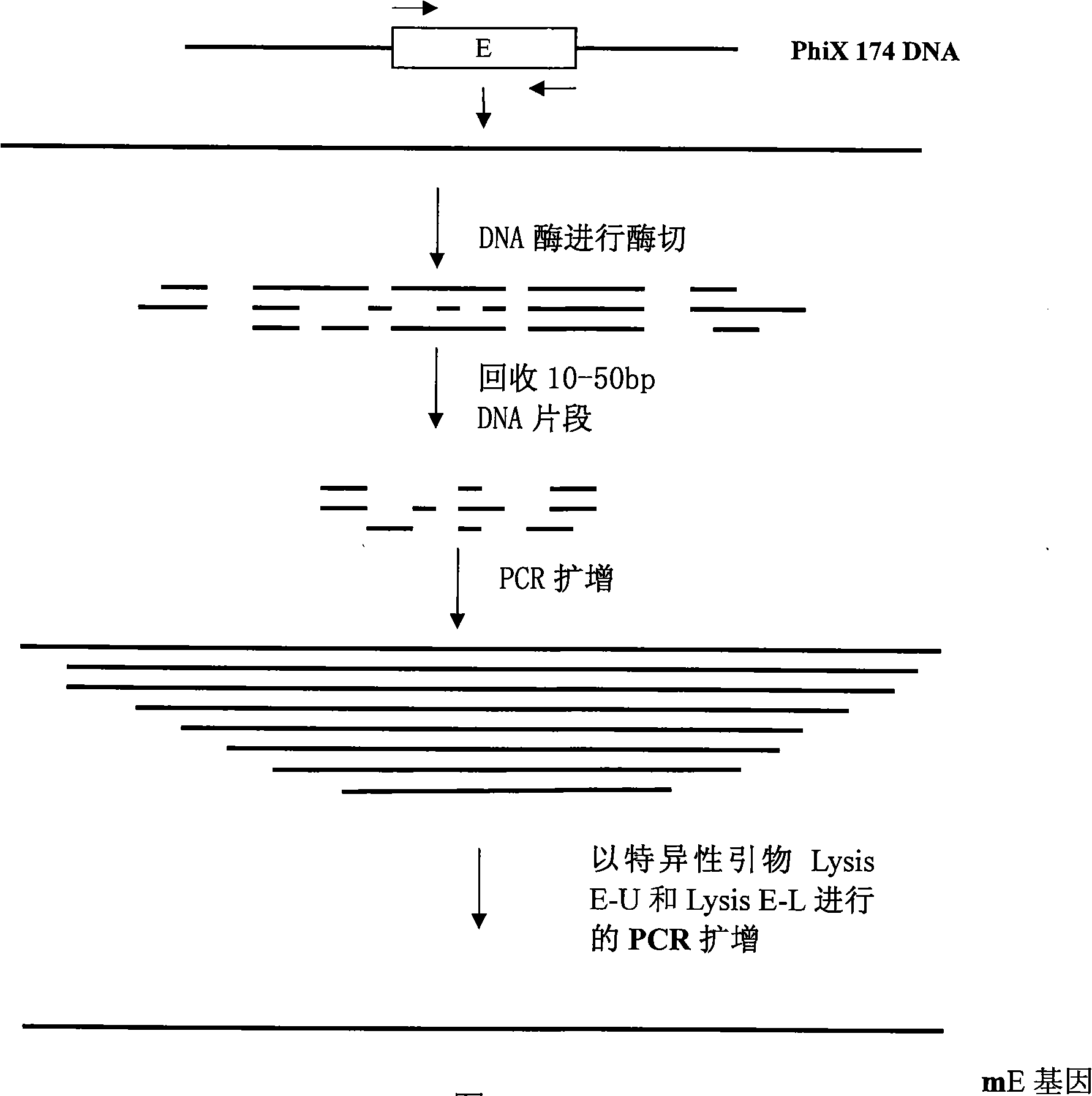Rearranged bacterial virus E gene, perforating plasmid vector containing the same and use thereof
A plasmid carrier and phage technology, applied in the field of DNA, can solve the problems of reduced drilling efficiency, no relevant research reports, reduction, etc., and achieve the effect of improving drilling efficiency
- Summary
- Abstract
- Description
- Claims
- Application Information
AI Technical Summary
Problems solved by technology
Method used
Image
Examples
Embodiment 1
[0030] Isolation and cloning of embodiment 1PhiX174 bacteriolytic gene E (mE)
[0031] Primers were designed according to the coding sequence of bacteriophage PhiX174 lytic gene E in GenBank:
[0032] Lysis E-U: 5'-AGGGAATTCATGGTACGCTGGACTTTGTGG-3' (SEQ ID NO.2)
[0033] Lysis E-L: 5'-AGGGGATCCGAGCTCTCACTCCTTCCG-3' (SEQ ID NO.3)
[0034] Restriction sites EcoR I and Bam HI were introduced into the 5' ends of the upstream and downstream primers respectively, which were synthesized by Shanghai Sangong. Use bacteriophage PhiX174 double-stranded DNA as a template to amplify the lytic gene E: PCR amplification reaction system is 50 μL, in which MgSO 4 2mM, 1μM each for upstream and downstream primers, dNTP 200μM, 10x Taq buffer, Taq TM DNA polymerase 2U (TaKaRa), template DNA 10ng. The PCR reaction program was: 95°C pre-denaturation for 5 minutes, 30 cycles at 94°C for 30s, 59°C for 30s, 72°C for 30s, and 72°C for 5 minutes. The E gene amplified by PCR is recovered by gel el...
Embodiment 2
[0036] The construction of embodiment 2 punching plasmid vector pBV-mE
[0037] After purifying the bacteriolytic gene mE cloned in Example 1, carry out double digestion with EcoRI / Bam HI, and use T 4 DNA ligase (TaKaRa) was ligated with the pBV220 vector digested by EcoR I and Bam HI double enzymes, ligated overnight at 16°C and transformed into Escherichia coli TG1 competent cells by heat shock, and the clones identified as positive by colony PCR were enriched A small amount of plasmid was extracted by alkaline lysis method and named pBV-mE.
experiment example 1
[0038] Experimental example 1 Comparison experiment of the punching efficiency of the punching plasmid vector constructed by the unrearranged phage lytic gene E and the rearranged phage lytic gene mE
[0039] 1. Experimental materials
[0040] (1), the punched plasmid vector pBV-mE constructed in Example 2;
[0041] (2), the unrearranged phage lysoE gene was constructed according to the method of Example 2 to obtain the punched plasmid vector pBV-E;
[0042] 2. Experimental method
[0043] Select 10 colonies (No. 1-10) of Escherichia coli TG1 containing punched plasmid vectors pBV-E and pBV-mE, inoculate them in 5 mL of LB containing 50 μg / mL ampicillin, and culture overnight at 28°C with shaking (220r / mL min), then transfer 1-2mL to 50mL LB containing 50μg / mL ampicillin, culture with shaking at 28℃ until OD 600nm Up to 0.4, 0.6, 0.8, 1.0. Take out 100 μl of the culture for later use, quickly raise the temperature of the remaining culture to 42°C to induce the expression o...
PUM
 Login to View More
Login to View More Abstract
Description
Claims
Application Information
 Login to View More
Login to View More - R&D
- Intellectual Property
- Life Sciences
- Materials
- Tech Scout
- Unparalleled Data Quality
- Higher Quality Content
- 60% Fewer Hallucinations
Browse by: Latest US Patents, China's latest patents, Technical Efficacy Thesaurus, Application Domain, Technology Topic, Popular Technical Reports.
© 2025 PatSnap. All rights reserved.Legal|Privacy policy|Modern Slavery Act Transparency Statement|Sitemap|About US| Contact US: help@patsnap.com



